By Larry Rivera and Roy Schaeffer
The chronology of one of the most famous photographs in history has been deliberately obscured
Much has been written and speculated as to the authenticity and timing of the photographs taken by James “Ike” Altgens, an Associated Press photographer, on November 22, 1963. This article brings forward some unknown facts and dispels some of the myths that prevail in the research community to this day.
The movements of James Altgens
In May 1964, two key articles were published which brought national attention to 42 year old James “Ike” Altgens and his photograph. The first was Dom Bonafede’s “A picture with a life of its own”, published in the New York Herald Tribune on May 24, which detailed Jones Harris’ quest to find out who the man in the doorway really was. The second was published the following day by Maggie Daly in The Chicago American, where she publicized the fact that Altgens had been within 15 feet of the President, yet he had not been brought to testify before the Commission. These two articles had the FBI up in arms about how to resolve the Altgens6 and its “man in the doorway” dilemma.
By the time Altgens was brought before the Commission on July 22, he lamented how he wished it had been sooner, because he admitted that time had dulled his memory somewhat:
“Well I wish I would have been able to give you this information the next day when it was fresh on my mind because 6 months or so later, sometimes the facts might be just a little bit off and I hate to see it that way.” (WC7H525) (it was actually 8 months)
Altgens stated in his FBI interview 6/2/64 that after the final shots in Dealey Plaza, and after following Secret Service men and motorcycle cops up the embankment, then placing a phone call to his office, he headed straight to the AP facilities located at the “Dallas News Building”, 5 blocks away on Houston and Young, to deliver his film for processing. The FBI then established 12:57PM Central as the time at which the Altgens6 “moved” on the wire. Quite a feat when one considers the time it would have taken for Altgens to make sure no more bullets were flying in Dealey Plaza, the time he took to follow Secret Service men and policemen into the parking lot adjacent to the railroad yard, making sure there were no other victims to photograph, make a phone call, then “dash” back to AP to develop the film. (WC7H519)
Bear in mind that Altgens never provided a precise time line of his activities after the shots. The severely cropped photograph, however, did not appear in newspaper print until the last evening editions in only a handful of newspapers on the West coast, and was not shown on national TV until 6:35PM by Walter Cronkite. The rest of the nation’s newspapers did not publish the Altgens6 until the following Saturday, November 23rd.
From Yahoo.com: How long does it take to develop black and white film?Best Answer: To develop negatives, the film has to be in the developer for a period of between 5 and 10 minutes (usually). Subsequent steps are required to make your negatives permanent and then the negatives must dry before printing. Plan on two darkroom sessions, 30 min. minimum for negatives and a couple of hours for printing. You probably want to contact print first. It’s fairly straightforward, and you should be able to make a good one in 10-30 minutes the first time.
What really happened?
Over the years, most researchers have accepted the official version, and have never questioned the timing involved. Richard Trask interviewed Altgens back in 1985 and maintained contact with him over the years for his 1994 volume Pictures of the Pain. His time line for Altgens and his photographs, has been accepted without questioning the logistics. For the sake of our discussion, and to put things into proper perspective, here is a possible time line for James Altgens and his roll of film:
1. 12:30 PM shoots Altgens6 and Altgens7 (1-2 minutes)
2. Snaps the Altgens8 photograph from his position on the South curb of Elm Street. Runs up the embankment following Secret Service Agents and Motorcycle cops. Amid the confusion, he must stay at least a few minutes to take in what is happening because he wants to make sure he captures the moment in which someone is arrested. (WC7H519)
Checking out the scene
3. Makes sure there are no other victims for him to photograph. (Ibid)
4. Comes down from the grassy knoll and calmly stands at the north curb for a few minutes. (Ibid)
Altgens calmly walking down past the Newmans to the sidewalk and curb of Elm Street.
Bill and Gayle Newman
Ike Altgens (back towards the camera) in one of the Cancellare photographs
Bill and Gayle Newman estimated they were on the ground for 3 minutes. Gayle, however, stated in an affidavit taken on 11/22 that they got up and laid down a second time. This could have stretched this closer to 5 minute
Altgens and his “gadget bag”
5. Altgens crosses Elm Street to retrieve his gadget bag before moving on to find a “nearby phone.”
Looking for a phone
 6. Locates a “nearby phone” and makes phone call to his office to inform that he has witnessed the assassination (FBI 6/2/64 DL100-10461) (anywhere from 5-10 minutes). Every member of the media was scrambling to find a phone – witness Robert McNeil who went into the TSBD looking for one! Phones were at a premium in Dealey Plaza.
6. Locates a “nearby phone” and makes phone call to his office to inform that he has witnessed the assassination (FBI 6/2/64 DL100-10461) (anywhere from 5-10 minutes). Every member of the media was scrambling to find a phone – witness Robert McNeil who went into the TSBD looking for one! Phones were at a premium in Dealey Plaza.7. After talking to his office about witnessing the assassination, he “dashes” or “sprints” down Houston Street,(FBI 6/2/64 DL100-10461, and WC7H519) a quarter of a mile, carrying his camera and gadget bag, five blocks to Houston and Young, to the AP office located on the third floor of the Dallas Morning News building. Enters building, catches an elevator, runs down the hallways, etc. (Total time 6 minutes)
8. Hands his camera to “someone” who rewinds unused film and removes his roll of film for processing. (5 minutes)
9. Depending on the efficiency of the personnel, the film must be removed from its roll in a dark room and placed in developer solution between 5 and 10 minutes.
10. Film is placed in fixer solution.
11. Film is placed in washing solution.
12. Negative film is dried at least another 10minutes.
13. First contact prints made of film roll Altgens 2-8. Altgens1 is missing. (10 minutes)
14. 2 Positive 8 1/2 x 11 prints are printed, one for processing, one for the “morgue” for storage.
15. Photographs are captioned and stamped for transmission.
16. AP supposedly sends A4, A5, A6 and A7 out on the wire (5 minutes) A4, A5 and A7 are the first to be published in newspapers. A4 and A6 are shown by Cronkite at 6:35PM on CBS.
Total minimum time: 60 minutes
The Trask time line
The 1994 book by Richard Trask, Pictures of the the Pain, dedicated an entire chapter titled “The AP Man”, to the Altgen6 photograph. Trask had Altgens arriving at his office at AP by 12:39PM, and then sticking around for a few moments to take phone calls to relay what he had witnessed. Afterward he was sent to Parkland Hospital with AP photographer Henry Buroughs to continue covering the tragedy:
“Someone grabbed my camera, removed the film and took it to process it, because they wanted me on the telephone reporting what I saw. We did an extraordinary good job, because within 20 minutes of the assassination we had a picture rolling on the wire–and that’s good. All over the world, at the same time that people got it in the U. S. of A. It was fantastic. I saw some of the cable photos that came back in that night, and one or more of the pictures I had taken were on page one of many of the world newspapers.” (Trask pg. 318)
Trask never mentions the fact that Altgens called his office from “a nearby phone” as documented in his FBI interview of 6/2/64 (FBI 6/2/64 DL100-10461) The report states he sprinted back after talking on this phone. Trask writes that Altgens informed AP Bureau Chief Bob Johnson about Kennedy being shot, when he arrived at the AP offices, after his mad dash down Houston Street. Trask concluded his time line by asserting that the Altgens6 was sent out at 1:03PM, which is also in conflict with the time of 12:57PM established by the FBI in the interview of 6/2/64. Trask conducted his interviews of Altgens on November 21, 1985, 22 years after the assassination.
Someone grabbed his camera
Another issue that is not explained by Trask, is that if someone grabbed his camera as he entered the AP offices, it had to have been because they already knew about his pictures, of which he informed Johnson in his phone call beforehand, while he was still in the field. The “someone” who grabbed his camera was never identified, despite Altgens having been on the job there for 26 years and probably knew everyone who worked there.
It must be noted here that Altgens was primarily a Wirephoto Operator and photographer who did all of the processing of the photographs that he took, from developing negatives, to printing and captioning, to actually working the transmitting equipment thermofax machines, during all of his career at AP in Dallas. It seems odd that on this particular day he would have been sent to continue covering the assassination at Parkland, especially when they already had Henry Buroughs carrying out that task.(Trask pg. 318)
Usually Altgens captioned the photographs that he sent on the wire. According to Trask, the sign-off of the captioned wirephoto read: “AP Wirephoto cel61303 stf- jwa”This indicates that one Carl E. Linde operated the wirefax machine and sent out a photograph taken by James W. Altgens on a Friday, at 1:03PM. Trask writes that Altgens witnessed the transmission. (The rest of this study will argue for the improbability of this time line.)
Problems with the official timeline
This FBI Report by itself derails the Trask time line:
The obvious question that needs to be answered here is why the FBI misrepresented the time the cropped Altgens6 was sent out on the wire on November 22, 1963.
In his Warren Commission testimony, Altgens made it quite clear that Secret Service men and motorcycle policemen went up the embankment toward the picket fence area. Amazingly [Note: although today we know why], Wesley Liebeler cut him off at that moment to ask him to elaborate as to the “little incline”:
Lingering at Dealey Plaza
He then explained why he stuck around Dealey Plaza for quite some time:
Interestingly enough, when one compares his Warren Commission testimony vis-à-vis his FBI interview of 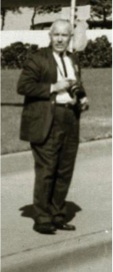 6/2/64, we note that in his WC testimony he does not mention placing his phone call to his office, conversely, in his FBI interview he does not mention staying to make sure there were no other victims, and taking another “long look around”. Perhaps that is the reason why the Warren Commission decided to drag their feet and were not overly excited about deposing James Altgens.
6/2/64, we note that in his WC testimony he does not mention placing his phone call to his office, conversely, in his FBI interview he does not mention staying to make sure there were no other victims, and taking another “long look around”. Perhaps that is the reason why the Warren Commission decided to drag their feet and were not overly excited about deposing James Altgens.
 6/2/64, we note that in his WC testimony he does not mention placing his phone call to his office, conversely, in his FBI interview he does not mention staying to make sure there were no other victims, and taking another “long look around”. Perhaps that is the reason why the Warren Commission decided to drag their feet and were not overly excited about deposing James Altgens.
6/2/64, we note that in his WC testimony he does not mention placing his phone call to his office, conversely, in his FBI interview he does not mention staying to make sure there were no other victims, and taking another “long look around”. Perhaps that is the reason why the Warren Commission decided to drag their feet and were not overly excited about deposing James Altgens.Needless to say, the time line claimed by the FBI in their report of 6/2/64 is physically impossible. Altgens would have taken at least 20-25 minutes, just to get back to his office. It would have taken 30-35 minutes just to process his roll of film. The earliest Altgens’ photographs could have been sent out via thermofax would have been 1:30PM. Another interesting tidbit about his Warren Commission testimony and the Trask time line, is the fact that he continued his assignment on to Parkland Hospital. This confirms that he was not around when his film was processed, therefore, Altgens did not really know the results of what he shot that day. Roy Schaeffer has been more specific about this, stating, “They sent him to Parkland to get him out of the way.”
The Roy Schaeffer time line
Recently, Mr. Roy Schaeffer and this author have painstakingly reviewed and revisited the Trask time line and Altgens’ FBI and Warren Commission interviews. Roy grew up in Dayton, Ohio and was reared in the newspaper business. In the 1950’s his father was president of the typographical union in Dayton, Ohio, where his responsibilities included negotiating labor contracts between the union and newspapers all over the United States, including most major newspapers such as the New York Times, L.A. Times,San Francisco Chronicle, to name just a few (Interview,
. Roy can be considered an expert of the highest order, with intricate knowledge of the newspaper business of the late 50’s and early 60’s and beyond.
As fate would have it, Roy happened to be the person at the Dayton Daily News who received the Moorman and Altgens6 photographs and removed them from the thermofax machine at 7:15AM, the morning of Saturday November 23, 1963. Schaeffer is extremely well-informed on alteration techniques and procedures, and the equipment necessary to make these changes. Immediately he noticed opaquing techniques on the images that were received that morning.
The very first thing we wanted to know from Roy was specifically, if the image taken off of a unifax machine was of sufficient quality that it could have been used to make alterations. Mr. Schaeffer answered this would not have been possible. Any alterations had to have been made locally in Dallas using the original negative, or the original negative flown that afternoon to a place with the proper equipment to realize any alterations. Here is what Schaeffer had to say about this:
“Only the negative from Altgens film was ready to be altered in about 2 1/2 hours after it being delivered to the DMN. Two positives then had to be made off the original negative. One print went into the AP morgue and the other to the wire operator who wrote the caption prior to it being sent over the wire. So either the negative had to be altered by a film stripper or a print of the original was made and then masking and opaquing of the positive had to occur prior to it being sent over the wire. This would take about two hours. My best guess that the altered original ran five hours later in altered condition over the wire with its caption. Then after a newspaper receives the AP wire it takes another 2 hours to use a line camera and make two copies. One with a 55 line screen on it. Then a zinc engraving has to be made for a newspaper to run the AP altered wire.”“I think the main reason Altgens made his statement as such was he knew the negative film was replaced with an altered negative. I pointed this out to Burl Osborn, Pres. of the DMN in 1994. He then referred it over to his lawyer who declined to expose this fact.”“In about 2004 I contacted the president of World Wide who then owned Altgens which was altered. I proved this in 1989 when I was sent 5 and 6 for book publication.” (email 3/19/15)“Once a fax comes off the wire, crude opaquing could be used. If it did occur, the opaque area would be darker or lighter than the rest of the altered photo. All the alterations of the Moorman and Altgens#6 were done prior to them being sent over the wire.” (email 3/21/15) (For a complete breakdown of the history of wirephotos and their capabilities, see appendix.)
Schaeffer tried for many years to get the Dallas Morning News to admit to the alterations of the Altgens and Moorman photographs, but to no avail. The fact that the original “morgue” copies of Altgens photographs were never shown, speaks volumes of the secrecy with which the photographs were treated. He believes the original, unaltered Altgens first generation positive prints still exist somewhere.
Why the alterations were made in Dallas
In completing our discussion of the Altgens time line it is important to establish when his images showed up in newspapers that day. The first Altgens photos that were published on the East coast and middle America newspapers were the Altgens4 and Altgens7. Here is a sampling:
Altgens7: OKC Times, The Evening Press Binghamton, The Lowell Sun, Springfield (Mass.) Daily News (5PM Late News edition), Bay City Times (MI), Sheboygan Press(falsified) *A6, The Tulsa Tribune, The Muncie Star, Chatanooga News-Free Press(night final), Atlanta Journal (3rd Extra)
Altgens4: The Longview Daily News, Seattle Daily Times (final)
[*Note: One very strange case was The Sheboygan Press, where Ralph Cinque has proven that two different front pages are in circulation, an original one which did not contain the Altgens6 and a second one which contained both the Altgens6 and Altgens7 photographs.]
In the hypothetical case that the negative was flown out of Dallas early that afternoon, the time of transportation via flight would have been added onto the time required for alteration, in order to make it on time to publish on the West coast and shown by Cronkite at 6:35PM EST.
CBS, ABC and NBC first photos not Altgens’
Despite the claims by Trask, that with unprecedented efficiency, Associated Press had the Altgens images distributed on the wire, there is nothing further from the truth. At 2:08PM EST, (1:08PM CST) 38 minutes after the assassination, Cronkite showed this UPI photograph and it was not one of Altgens photographs (lower left):
And ABC showed it almost simultaneously:
Furthermore, this same UPI photograph was the very first one published in afternoon newspaper and Extra editions that day. This one is from the The New York World Telegram:
And this is the original, non-cropped UPI photograph:
The race to publish was on
It is quite obvious that the media were competing with each other to get the “scoop” in before the competition. AP and UPI were mortal enemies in this battle. (Trask pg 391)The Dallas Times Herald and The Dallas Morning News had couriers who were scooping up and catching rolls of film from photographers riding in the camera cars, (Trask top of pg 312 Featherstone, page 439 top, ). One particular instance, which came to the attention of the Warren Commission was when Dallas Times Heraldphotographer Bob Jackson tossed a roll of film to courier Jim Featherstone as camera car #3 was on Main Street and close to making the turn onto Houston Street. He misjudged its flight in the wind and allowed it to fall and roll onto the pavement, much to the amusement of his colleagues in camera car #3. (WC2H158, Trask 439) Featherstone then rushed this roll of film over to the Times Herald installations on Pacific Avenue for immediate distribution nationwide via wirephoto.
This photo, taken as JFK’s limousine made the turn onto Main Street, which was in that specific roll of film, was made available to the media roughly within an hour of the assassination. The photo was severely cropped, see entire photograph below.
John Caldbick was 17 years old and had just started working the day before as a copyboy at the Seattle Post Intelligencer. This is how he described the scene that day:
“Smaller groups gathered around the UPI Wirephoto and AP Telephoto machines, primitive faxes that took about five minutes to squeeze out a bad picture on wet, tissue-like paper that always made my fingers feel weird. It was like watching a movie inextreme slow motion, the image burned into the chemicals of the paper one thin scanned line at a time, slowly building up to an entire picture and caption. Then there’d be a brief pause, and another one would start its slow vertical climb out of the machine.One of the staff artists’ main and most hated jobs was retouching these things to make them passably usable. The first photo I remember seeing that day was of the Kennedys smiling and waving from the limousine, taken just a few minutes before the shots were fired:” (See image above Dallas Times Herald) (From: http://www.historylink.org/_content/printer_friendly/pf_output.cfm?file_id=10670)
Here is a sample of a retouched wirephoto as noted by Caldbick above:
This scan by Richard Hooke of the Oakland Tribune of the late afternoon of 11/22/63, shows an extremely cropped wirephoto with obvious retouching showing tracing around JFK’s head, the rear view mirror, Connally’s head, Kellerman’s shoulders and head, sun visors, to name just a few. Exactly the procedure described by Caldbick above: “One of the staff artists’ main and most hated jobs was retouching these things to make them passably usable.”
The competition continues
The Associated Press was definitely in this horse race to get photographs out nationwide. The first Associated Press wirephoto shown on 11/22 by NBC was this one:
Robert Groden’s 1993 book “Killing of a President” credited AP/Worldwide with the following photograph. This proves that the Associated Press was actively transmitting photographs early that afternoon, and raises the question as to why the Altgens photographs were delayed when compared to the rest of the photographs that they were distributing that day.
Amazingly enough, the next photograph to make its way on television was the Cancellare photograph shown earlier in this study, which depicts the backside of Ike Altgens. It was broadcast by NBC at 2:40PM that afternoon!
This simple chronological order of the wirephotos that were transmitted by different media that day suggests that they were taking no prisoners when it came to getting the scoop over the competition. Conspicuous by its absence, however, were Altgens photographs. Simply put, they were not shown on television that afternoon, and only made their way onto newspapers very late that day. Coupled with our analysis of the time it would have taken James “Ike” Altgens to make his film available to the media, and the obvious delay his photos underwent, this now raises serious questions as to the real trajectory of his roll of film. We must now consider a more nefarious scenario.
The Jaggars-Chiles-Stovall Connection
“I have long suspected that all is not right with that firm”–Beverly Brunson
JFK researchers are very familiar with the firm Jaggar-Chiles-Stovall. It was Lee Oswald’s second place of employment after he came back from the Soviet Union, and he worked there for six months between October 1962 to April 1963. As we shall now see, many loose ends and unanswered questions remained in the investigation of this company, some of which we will now attempt to bring into focus.
We decided to take another look at the physical layout of downtown Dallas and noted that the address of Jaggars-Chiles-Stovall, at 522 Browder Street, was in close proximity to Dallas City Hall, which in 1963 was on Harwood Street, and to the Dallas News Building at Houston and Young:
In the 2014 article “The Cartha Deloach Memorandum”, we inferred the possibility that Jaggars-Chiles-Stovall, a company which did contract work for the CIA in the area of top secret maps for the U.S. Military, appears to have had a role in the alteration of the Altgens6 photograph that afternoon, before it was sent on the wire to newspapers. Citing British researcher Paul Rigby’s time line, the article established at least a 3 hour window before the Altgens6 was published in newspapers on the West coast. The East coast papers did not publish the photograph until the following Saturday, and Walter Cronkite did not show the photograph until 6:35PM Eastern. Brunson’s suspicion of JCS was well founded. On October 26, 1991, author Harry Livingstone interviewed the Reverend Jack Shaw in relation to his research on Roscoe White. In passing, Reverend Shaw stated that Jaggars-Chiles- Stovall, which was located downtown at 522 Browder Street, was used as a base of operations for the assassination. (HT2 466). Brunson in her studies notes that Seth Kantor had written an account of his experiences that day which was published as an exhibit in Volume 20:
The fact that Seth Kantor reported that a JCS employee was responsible for spreading a “rumor” about another wounded victim makes this information extremely significant. It indicates that at lease one JCS employee was actively involved in the propagation of information (or disinformation) during the assassination. (Kantor Exhibit 4 Vol 20)
In a very rare 1978 letter from the great Sylvia Meagher to Harold Weisberg, after reviewing Edward Eptseins’s book “Legend’, Sylvia had this to say about her suspicions of Jaggars-Chiles-Stovall, and their role in setting up Lee Oswald as the patsy:
“The second item is Epsteinker’s claim in the body of the book that John Bowen (at Jaggars- Chiles-Stovall) and Gary Taylor both saw the rifle in Oswald’s possession (in the footnote, this is changed to Gary Taylor and Alexandra De M. Taylor, with Bowen dropped). But Gary Taylor said no such thing in his Warren Commission testimony–why should one believe him now? As for Bowen, he is an ex-convict, using an alias, and I would like to know if he was paid for giving Epsteinker an interview.”
What was Jaggars-Chiles-Stovall doing?
 In his book Spy Saga, Phillip Melanson observes that this company had been practically ignored by previous researchers. When he dug a little deeper, he noted that Lee Oswald had annotated two intriguing terms in his address book below the reference to the company: “Typography” and “micro dots” This led Melanson to try to contact ex employees of the company and on 5/14/81 he spoke to Mr. Steven Baker. Baker confirmed for Melanson what John Graef had already told the Commission in 1964 in this excerpt from Spy Saga:
In his book Spy Saga, Phillip Melanson observes that this company had been practically ignored by previous researchers. When he dug a little deeper, he noted that Lee Oswald had annotated two intriguing terms in his address book below the reference to the company: “Typography” and “micro dots” This led Melanson to try to contact ex employees of the company and on 5/14/81 he spoke to Mr. Steven Baker. Baker confirmed for Melanson what John Graef had already told the Commission in 1964 in this excerpt from Spy Saga:“These references have been only partially deciphered by previous research. 522 Browder Street was the Dallas address of the Jaggars firm; RI1 1150, its telephone number. Typography can refer to almost any aspect of the advertising or printing trade, from typesetting to photographic composition. In May 1981 the author talked with Mr. Steven Baker, who then worked in Jaggars’ advertising department.” He indicated that at Jaggars, typography had a more specialized meaning: it described the sophisticated techniques of photographic reduction and modification performed by the firm in its advertising work. In 1962-63, Baker asserted, Jaggars used “modification cameras” and other complex equipment which were more sophisticated than the photographic equipment available in most photo labs.67Microdot is a system employed in espionage to store and transmit intelligence data. Using sophisticated techniques of photographic reduction, the system affords the storage of large volumes of strategic information within a tiny spot the size of a semicolon or an exclamation point. Such a spot is then concealed within the text of a letter or document for storage or transmittal. It might be fruitful to examine all of Oswald’s correspondence, notes and documents to see if any contain microdot. Neither the Warren Commission nor the House Committee did that. If microdot data could be found, it might reveal much about Oswald’s spy missions and about the identity of those who controlled him. If the Commission or the Committee had become curious about microdots, however, they most likely would have asked the nation’s premier espionage agency to analyze Oswald’s papers.”
Melanson also acknowledged that Jaggars employees and management claimed ignorance about microdots, but in the final analysis, it is obvious that this type of classified work would have been denied in any investigative setting.
Photo manipulation capabilities
Surely, any outfit equipped to manufacture microdots would have had unlimited capabilities of photographic manipulation. A microdot is in effect a reduced negative,(see appendix) and as we shall see, the re-generation of the Altgens negatives after alteration of the photographs, is fundamental to the production of positive prints for later dissemination.
This is how John Graef, who was director of the photographic department at Jaggars-Chiles- Stovall, (Vol 10 pg 175) described their capabilities:
Clearly, these passages describe very specialized work in the field of photographic optics, enhancement and manipulation using equipment not normally found in commercial facilities. In his effort to please the Commission, perhaps Graef was just a little bit too revealing about the capabilities of Jaggars-Chiles-Stovall.
Which again brings us back to the Altgens6 and Altgens7 photographs. It has been pointed out by researchers how fast key TSBD witnesses Billy Lovelady, Bill Shelley, Danny Arce, Bonnie Ray Williams, Charles Givens, and others were taken to City Hall for affidavits that day, literally before there had been a chance for the smoke to clear in Dealey Plaza. Other witnesses like Bill and Gayle Newman were taken to the Sheriff’s office on Main Street, a classic example of divide and conquer tactics. Furthermore, Buell Wesley Frazier, another employee and possible patsy, who was on the steps of the entrance, was missing in action, and was not heard from until 6PM later that day. The logistics would have dictated the need to divide and control these key witnesses.
In Lovelady’s case, we know that Detective James Leavelle took his affidavit at City Hall that afternoon:
Because of the obvious reactions of Secret Service Agents John Ready and Paul Landis, who are seen looking in the direction of the TSBD, the Altgens6 offered the conspirators a perfect opportunity to show the world from where the shots should be perceived. If you were trying to frame the patsy, this image was perfect “evidence” that the shots were fired from behind Kennedy, the building where Lee Oswald worked.
The unwanted evidence
The only problem they confronted was a plethora of unwanted evidence captured in the photograph, specifically the people in the doorway, and the reactions of Roy Kellerman, Bill Greer and Emory Roberts. Other people standing at the curb had to be air-brushed out as well, apparently people who were not supposed to be in Dealey Plaza that day. As mentioned earlier, the very first versions of the photograph were severely cropped. The first attempt to show the non cropped photograph was this one by the Saturday Evening Post of 12/14/63:
Even this version of the Altgens6 was not intact, where the top portion had been cropped to remove the upper parts of the fire escape of the Dal Tex Building in the background. To this day it is unknown how far up the original photograph reached. (Weisberg WWII)
By far, the largest obstacle preventing the immediate dissemination of the Altgens6 had to be the presence of Lee Oswald, Buell Wesley Frazier, Billy Lovelady and Joe Molina in the doorway. All of them were potential patsies . That would have been the primary reason to send the negatives on to JCS for alteration. All four of these men were altered in one way or another. Then, the government tried desperately to convince the critics that the man in the doorway was really Billy Lovelady, by co-opting and intimidating a couple of witnesses into identifying doorman as Lovelady. The prize for identifying Oswald – that they themselves would not be accused of pulling the trigger.
As mentioned earlier in the article by Bonafede, Jones Harris actually commissioned a thorough study by an expert by the name of Bernard Hoffman, which enhanced the extant photograph, and only served to raise even more questions which prevail to this day. To his credit, Harris tried everything in his power to obtain a photograph of Billy Lovelady for comparison, and was met with hostile resistance in Dallas every time.
This photograph immediately induced early researchers Harold Weisberg, Shirley Martin, Beverly Brunson and many others to break out their magnifying glasses and study every last pixel of the image. The alterations are numerous and need to be broken down in left and right halves as shown in these brightness adjusted images:
But the alterations were not limited to the Altgens6. Many researchers have discovered that the Altgens7 is also rich in alterations:
The Presidential Flag
The key to understanding the alterations to the Altgens7 can be found in the Presidential Flag. As seen above in Willis slide number two, the border of the flag contained a golden fringe, which was uniform on three sides – top, bottom and outer.
(Fringes on flags are used in formal settings such as parades, inaugurations, dedication ceremonies, etc., see the appendix) Furthermore, this particular Presidential Flag had no loose tassels or any other loose ornaments. The Altgens7 contains a prominent sliver of sorts which conveniently splits the rear windshield, facilitating masking and opaquing on the right side of the glass, while covering Chief Curry.
Schaeffer describes this alteration: “They added a slight white opaque to the top of the flag to conceal the slight masking on the rear of Curry’s back car windshield to help hide their view in the plaza.”
The Altgens7
Here is the Altgens7 photograph which was sent on the wire, scanned from the original copy of the New York Times of November 23, 1963. Sheriff Bill Decker and the left tail light have been cropped out, as well as the upper portion of the photograph which showed the top portion of the overpass:
After showing that alterations were indeed performed on these photographs, the obvious question remains: where could these alterations have taken place?
Roy Schaeffer breaks this down:
“In truth, I think three places could have altered Altgens6 photo. Assuming that JCS could have done it, the Dallas Morning Newshad the equipment to do so. The key thing is where the negative was developed and looked at.” (email 3/20/15)“The Altgens photo could have been altered at JCS or the DMN. For example, the Dayton Daily News would use what is called a Job Shop, Craftsman photo craft. The newspaper would use this if they didn’t have the necessary equipment to change a photo or mask out or opaque certain things in the photo or negative that the newspaper didn’t want published.“I am on the fence about as whether the DMN or JCS altered the Altgens film. One thing for sure, a copy of the original film strip was remade or re-shot after it was altered. This could have been done at the JCS. No newspaper has this equipment. Period.” (email 3/25/15)
Once more, the revelations of the Reverend Shaw, who told Harry Livingstone that Jaggars- Chiles-Stovall was used as a base of operations for the assassination, make this outfit the primary suspected culprit for the activities whereupon the Altgens photographs would have been altered. We have shown here that they certainly had the capability and equipment to do so. The Dallas Morning News building, which housed the A.P. office, was a hub of frenzied activity that afternoon and weekend. Any activity involving photos of the assassination would have attracted an inordinate amount of attention. The physical proximity of Jaggars-Chiles- Stovall, only 8 short blocks East, in a very quiet and unassuming setting, and in relative proximity of City Hall on Harwood Street, would have made JCS the ideal venue for this type of operation. Once the altered negative was produced, it would quietly make its way back to the Dallas Morning News building at Houston and Young for nationwide distribution. One final argument in favor of Jaggars-Chiles-Stovall, has to be the simple fact that Lee Oswald had worked there for 6 months from October 13, 1962 to April 6 1963: his appearance and physical characteristics were very well known to the company.
A possible scenario
Based on the arguments presented so far, which casts great suspicion on Jaggars-Chiles- Stovall, here is one possible scenario:
Altgens arrives at 12:50-12:55PM at the A.P. facilities on the third floor of the Dallas Morning News building at Houston and Young, and “someone” grabs his camera because they already know he has witnessed the assassination, and has potentially explosive photographs, having discussed this by telephone with his boss Bob Johnson prior to arriving, while he was still in Dealey Plaza. This “someone” has never been identified.
In trying to beat out the competition to put photographs on the wire as soon as possible, the negative is developed and examined on a light table. The first 8 1/2″ x 11″ prints are made, one of which goes to the “morgue”. Judging by the swiftness with which competitors The Dallas Times Herald and UPI have put some of their photos on the wire that day, with couriers intercepting photographers riding in camera cars, it can be safely assumed that Altgens negatives are available within an hour of his arrival at AP, 1:50PM CST. Associated Press, via live television, is aware that CBS News with Walter Cronkite, NBC with Bill Ryan and Frank McGee, and ABC with Ron Cochran, are already showing photos shot by the competition. They are now frantic and trying to catch up. It is our opinion that a major mistake is made when they send out the photograph which is shown by NBC around 2:07PM Eastern, depicting the President with John Connally and Jackie at Love Field immediately after deplaning. This shows they are actively in competition to wire photographs to the rest of the country. It also shows the efficiency which they are capable of. The Altgens4 and Altgens6, however, do not make it onto television until 6:35 PM.
At least four images are identified, which show the President immediately before and after the shots, Altgens4, 5, 6 and 7. Schaeffer believes that at least one other photograph is possible to have been shot by Altgens between 6 and 7. (This one was scratched entirely – could it have shown what several motorcycle escort and at least 60 different witnesses said about the complete stoppage of the motorcade that day, and Secret Service Agents dismounting and running past the JFK limo and others going up the embankment, as reported by Altgens himself.) At this moment, the images must be thoroughly inspected by “someone” who knows what needs to be taken out. In following the time line of UPI and The Dallas Times Herald photographs, which were the first images put on the wire, by 1:50PM CST, the Altgens photos should have been sent out via thermofax, yet they were not. As mentioned earlier, Cronkite shows the Times Herald photograph within an hour of the assassination, but does not show Altgens photographs 4 and 6 until 6:35PM EST, 5:35 Dallas time. This leaves a time void of 3 hours and 45 minutes, where his photos are unaccounted for. (It is important to realize that in the case of Altgens photographs, it had to be all or none because the suppression would have been obvious.)
Altgens 6 and 7 are deemed unsuitable for public consumption and the negative strip is sent down the street to Jaggars-Chiles-Stovall. The positive prints are enlarged so they can be worked on. Airbrushing, masking and opaquing are the only techniques available at the time. As noted above, the Altgens6 undergoes at least a dozen alterations. The Altgens 7 is altered in the area of the rear window of Chief Jesse Curry’s lead car to hide the actions of Forrest Sorrells, Winston Lawson and Curry, who are turned around like Sheriff Bill Decker, watching the events behind them unfold while the motorcade is at a stand still. The upper portion is chopped off to remove the cement railing at right of the triple underpass. Once the alterations are in place and new negatives are produced, the images are re-shot, and a new negative produced on Tri X Pan film. The original negatives are destroyed. The resultant negatives are sent back to the AP offices at the Dallas Morning News building and these are then processed in the normal manner and distributed nationwide. Here is what happens next as described by Roy Schaeffer:
“Working backwards, the original negative had a print made to go over the wire service from Dallas to the Dayton Daily News on the AP wire Saturday morning 11/23/1963 at 7:15 pm. After I watched it print out on the wire machine I noticed on the way to engraving to have a zinc plate made from it, I noticed the editing in the area of the front windshield. Mainly the area on the passenger side of the Presidential limousine. I also notice that the motorcyclist was much more clear or darker that the front windshield of the limousine. I also notice that the flag was darker than than the persons in the front of the Presidential limousine.While in the engraving department, Sony Delator shot the AP fax using a line camera to crop the photo so it would fit in a three column space. So working backwards the AP fax when received by me was 18 hours later. When Altgens called the AP Dallas, he gave the info the caption writer would write when he received the photo after it was developed.After checking the Cincinnati Enquirer, Indianapolis Star later that week all had the same ALTERED (photo), what is now referred to as the AP6, or DN5. The process is the negative has to be developed and dried. Someone then examined the emulsion side of the developed Altgens film strip and then altered it for some reason that I didn’t know at that time.If the Cronkite #6 positive photo was shown as it appears in a altered state at 6:30 pm that Friday, 11/22/1963, so now we have a time line of 5 hours. My photograph training tells me that the Altgens #6 was altered by someone who knew what he was doing.”“On 12/14/1963 the Saturday Evening Post ran a almost full photo of it. I found at least 8 places where the photo has been retouched. I think in this case the AP photo editor had already typed out the caption with a time date but the photo wasn’t attached to the photo to be sent out. ONE MUST REMEMBER ONE THING – THE FAX SENT OVER THE WIRE WAS SEVERELY ALTERED. This suggests that one can’t trust the time stamp as to when the AP went over the wire in a unaltered state.”“My work started on the altered Altgens photo from the beginning. My problem in telling workers at the newspaper of the altered Altgens I had no reason for this to occur in December of 1963. The fly in the ointment is the entire negative had to be re-shot using Pan X film on a duplicating film stock. The (proof) of the correct time line is when the AP photo arrived at the newspaper it was sent to over the AP wire. In my opinion the time line was at about 5:30 pm Dallas time. The time to alter the Altgens #6 would be about 4:30 pm. for the altered AP photo to be sent out to various newspapers who bought the AP wire service. Roy Schaeffer
Conclusion
The surviving CBS, ABC, and NBC television videos, which take us back to November 22, 1963, as riveting as they are, show a blow by blow account of the tragedy that was unraveling when this nation lost its innocence to a conspiracy that claimed our 35th President. Within these videos, we are unequivocally able to discern the order in which early images and photographs were propagated and disseminated to the world that day. In the case of the Altgens photographs, unfortunately, it is clear that these were set aside and were not sent out until later that afternoon. Despite concerted attempts to establish their dissemination early that afternoon, the truth of the matter is that the two most important photographs, the Altgens6 and Altgens7 were delayed long enough to undergo extensive alteration by forces unknown to this day.
Larry Rivera was born in Alaska, the son of a career military man who served as CID officer in the Army. He has published many articles on the assassination, especially on the issue of the doorway of the TSBD. Larry has given presentations at Santa Barbara for the 50th observance of the assassination on Buell Wesley Frazier and, more recently, at Judyth Vary Baker’s Conference at Arlington on the DPD motorcycle officers
Roy Schaeffer graduated from Aviation Electronics school in the Marine Corps in 1960. After graduating, he was assigned to the El Toro Air Station in California, just like Oswald. In 1963, he was working as a photo processor at the Dayton Daily News when he personally received the Altgens6 photo-fax. Immediately, he could see signs of alteration, such as masking and opaquring, which began a lifelong quest for JFK truth.
[NOTE: This is one in a series of articles being republished since veterans today.com deleted them in a dispute with its Senior Editor, Gordon Duff, about which I have since written several articles.]
Please follow and like us:
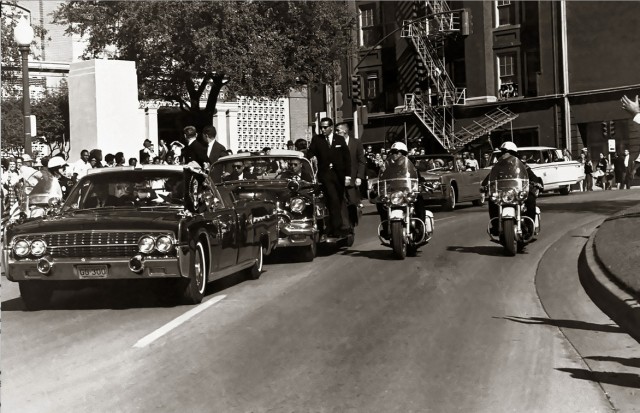
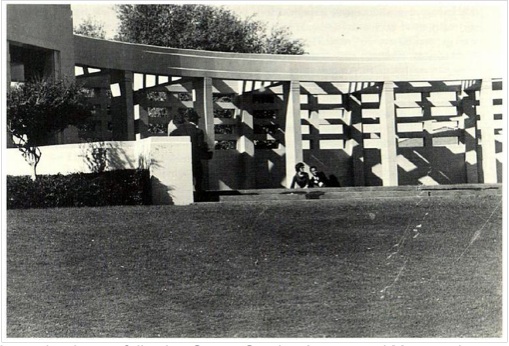
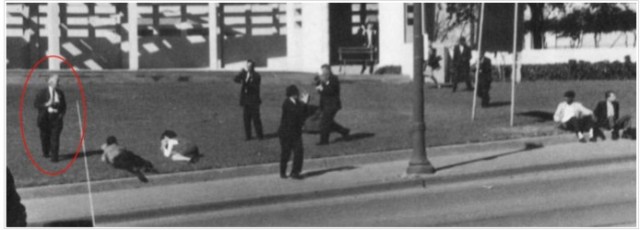
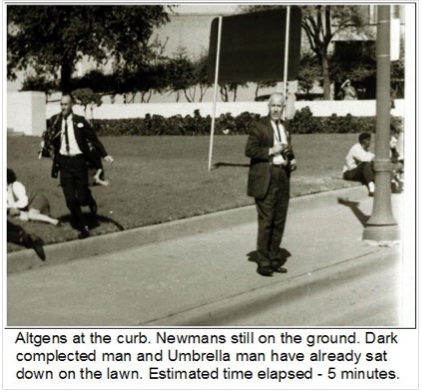
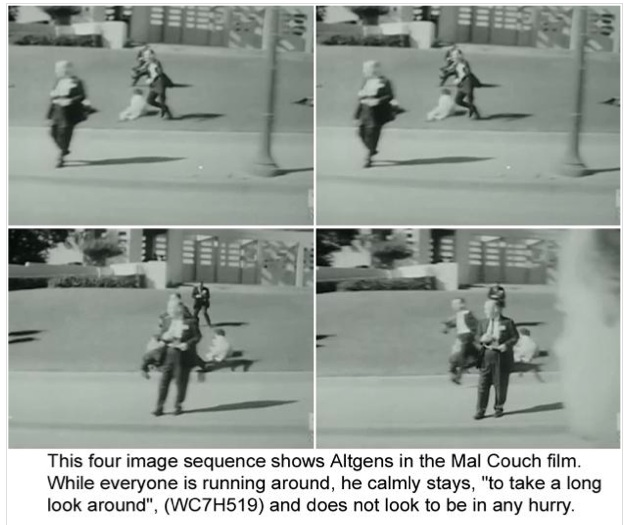
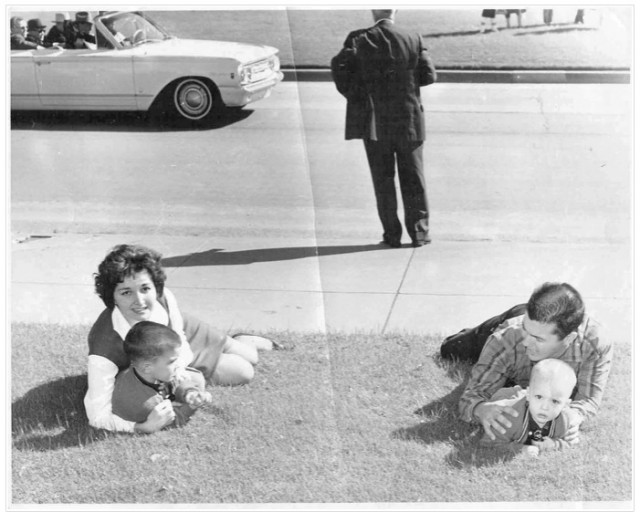

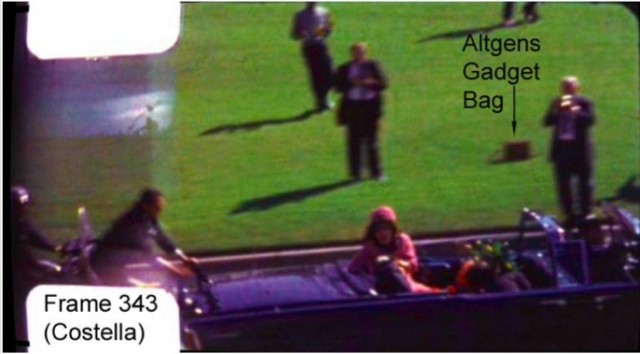
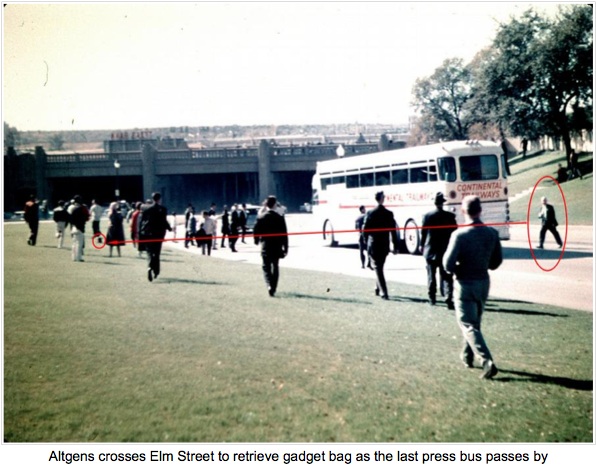
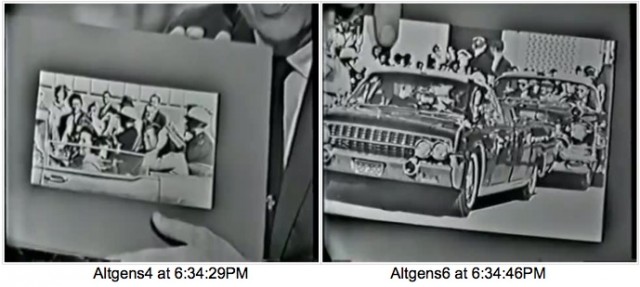
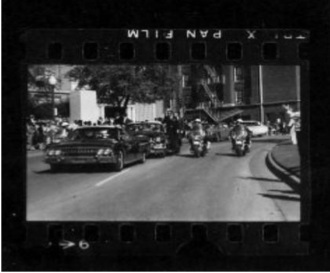
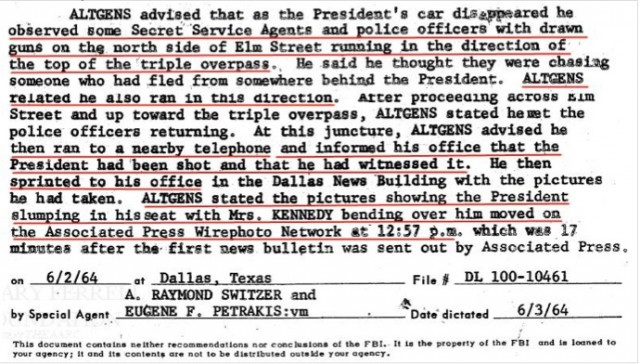

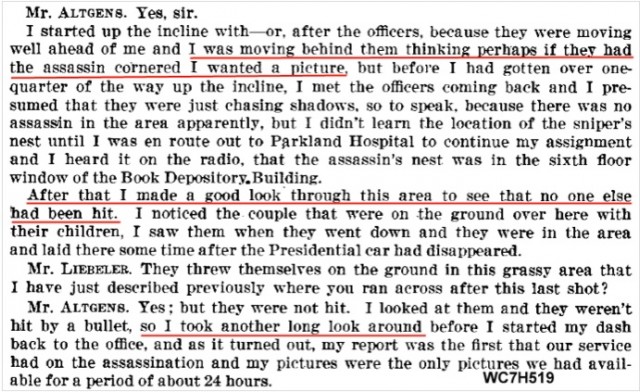
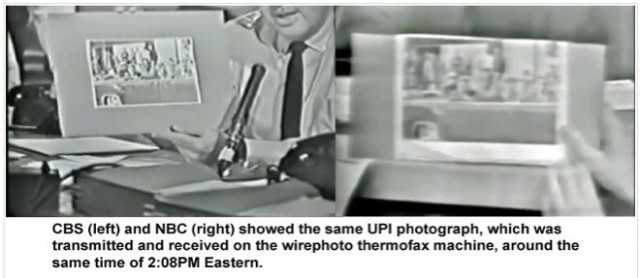
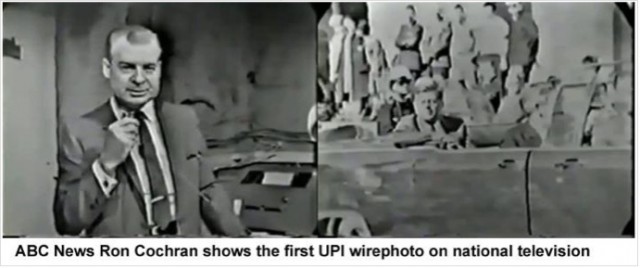
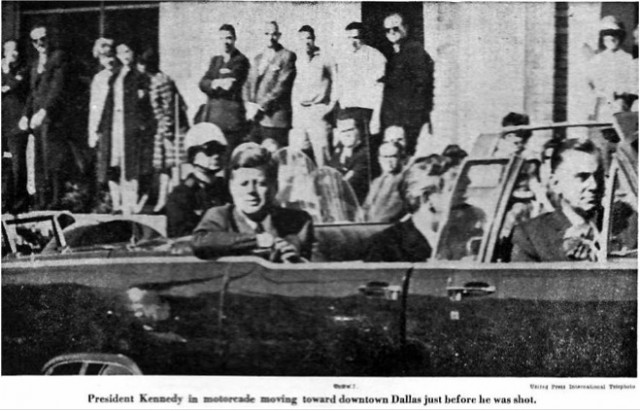

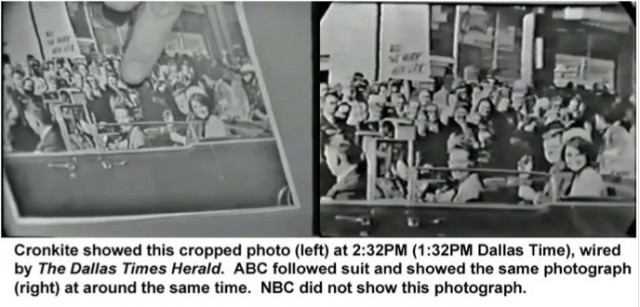
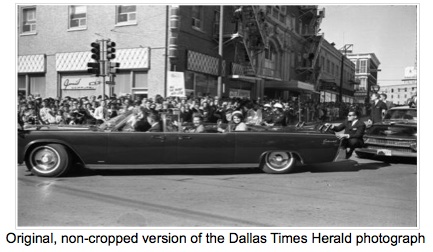
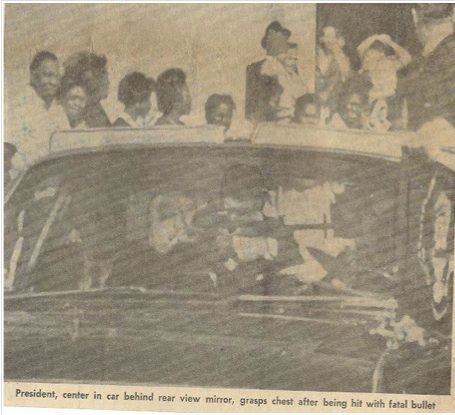
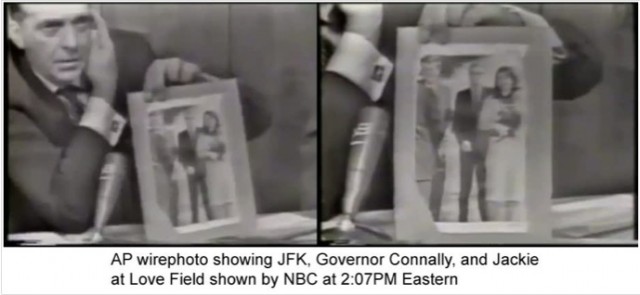
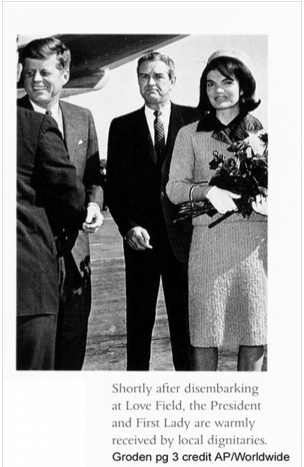


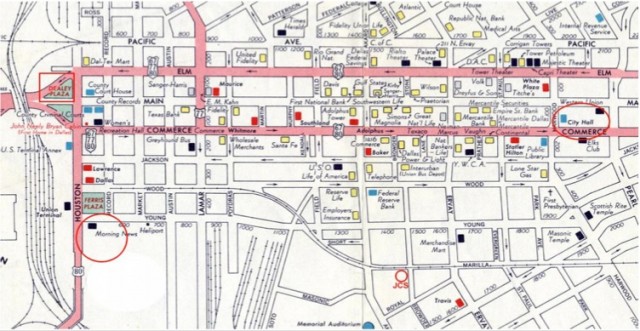

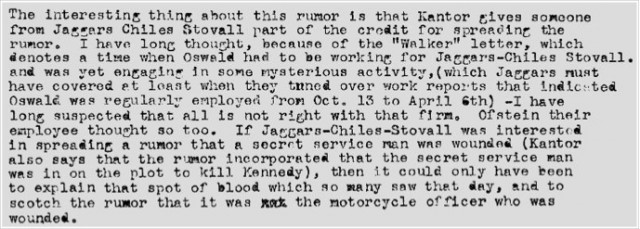
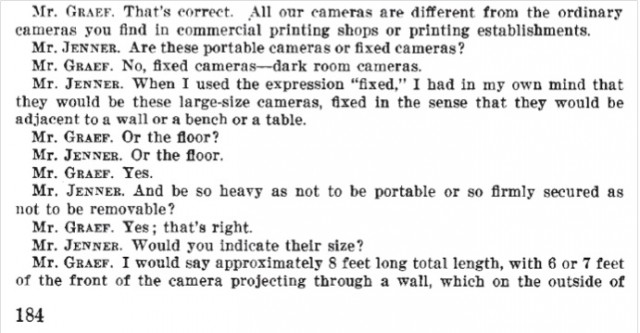
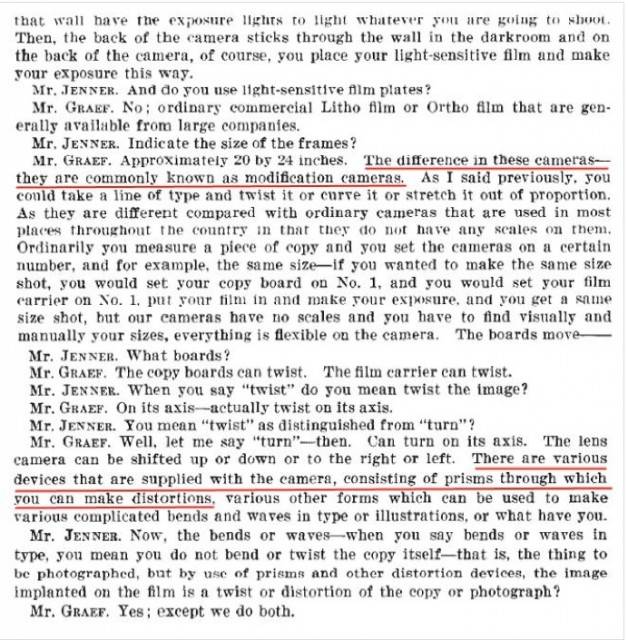
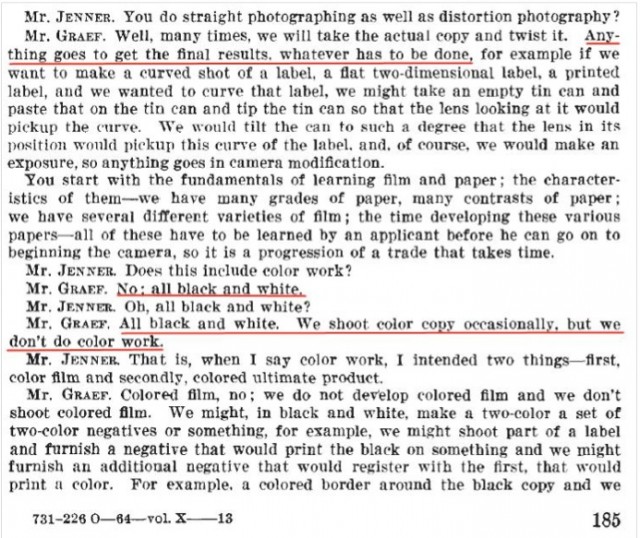

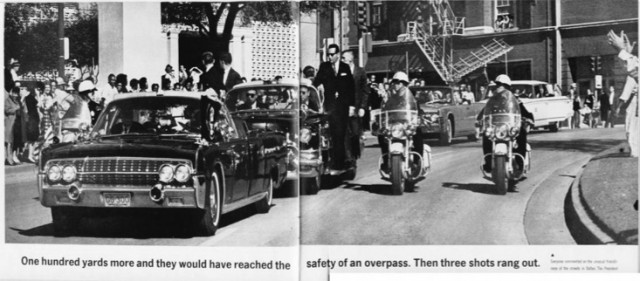

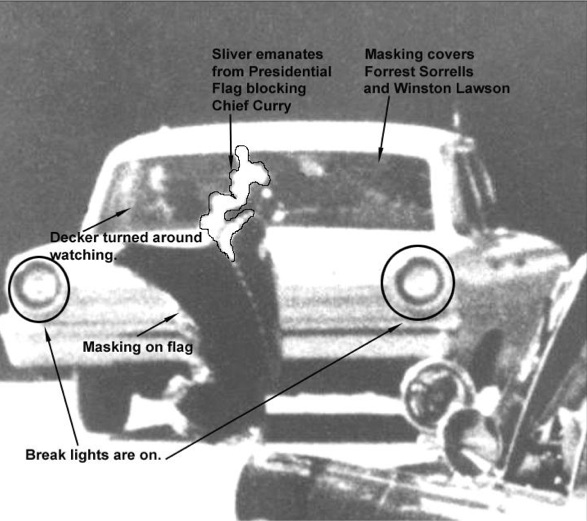

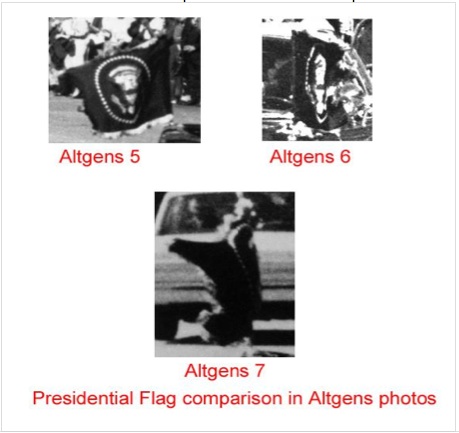

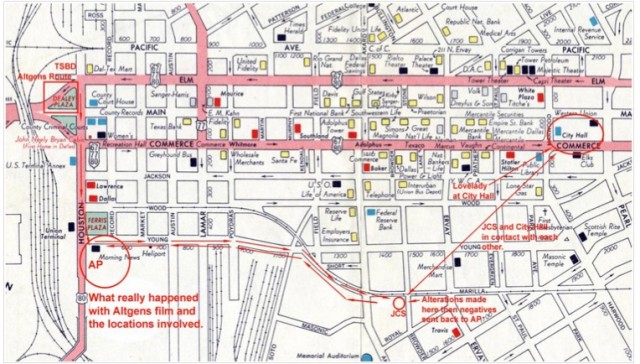
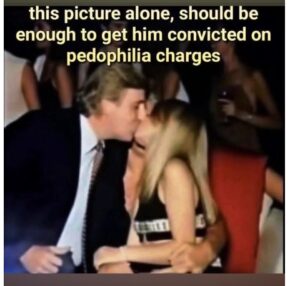

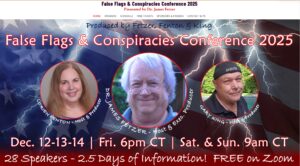
I've just installed iStripper, and now I enjoy having the sexiest virtual strippers stripping on my desktop.